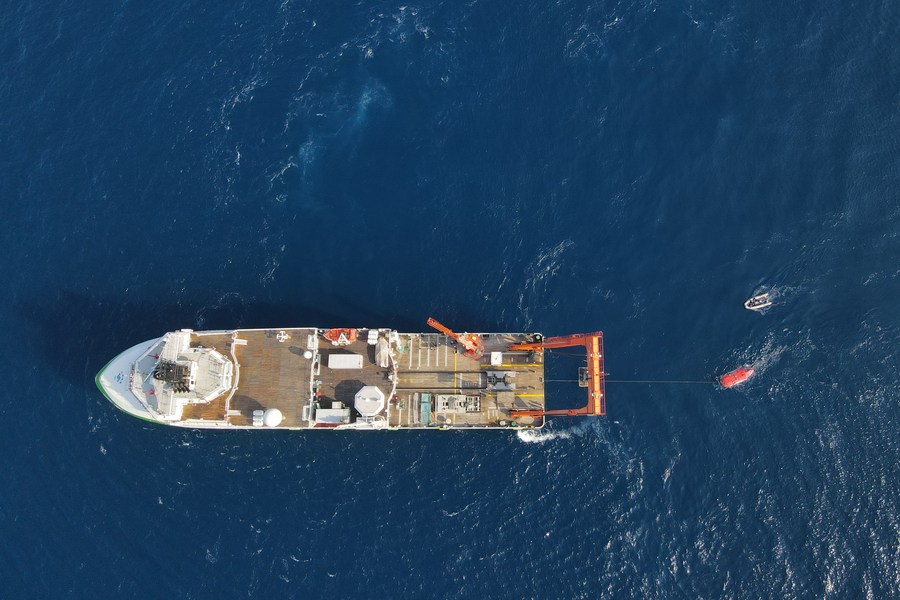China deploys in-situ deep-sea station for uncrewed research

Aerial photo taken on April 16, 2021 shows the deep-sea manned submersible Shenhai Yongshi (Deep Sea Warrior) and its mother ship Tansuo-2. (Xinhua/Zhang Liyun)
BEIJING, Oct. 29 (Xinhua) -- Chinese researchers have deployed an in-situ scientific experiment station on the seabed that will enable long-term uncrewed scientific research in the deep sea, the Chinese Academy of Sciences (CAS) said.
The researchers aboard the research vessel Tansuo-2 (Discovery 2), carrying the crewed submersible Shenhai Yongshi (Deep Sea Warrior), deployed the station during their expedition. The vessel has returned to Sanya in south China's Hainan Province, said the CAS.
The in-situ scientific experiment station is a new deep-sea system proposed by China in recent years. It takes a deep-sea base station as the center, can carry a variety of uncrewed submersibles, and access chemical/biological labs and other platforms to carry out a series of in-situ experiments and exploration.
Chen Jun, a researcher from the Institute of Deep-sea Science and Engineering under the CAS, said traditional marine surveys take samples from the seabed and get them tested in the land labs. Conducting in-situ testing in the deep sea can avoid damage or loss of sample data due to environmental changes, said Chen.
According to the CAS, the station will work autonomously on the seabed and be able to conduct its monitoring and management. All data will be regularly transmitted back to the shore-based control center through the deep sea glider, and researchers can also remotely control the in-situ scientific experiment station.
The station's power system can store 1,000 kilowatt hours of electricity and support the station to work continuously on the seabed for more than half a year.
In this mission, the "Deep Sea Warrior" crewed submersible connected to the base station with the in-situ lab and carried out a series of tests, such as the wireless communication and mode switching of the station.
In future missions, the station will connect to more intelligent, uncrewed experiments, detection, and information transmission systems.
Photos
Related Stories
- China's offshore undersea detection system passes sea trial
- Chinese researchers discover new varieties of deep-sea brittle stars
- 'Deep Sea Warrior' completes sea trial mission in South China Sea
- China turns sea waters into "barns" with marine ranching complexes
- Extent of Antarctic sea ice hits record low: study
- 59 arrested for illegal sea sand mining
Copyright © 2022 People's Daily Online. All Rights Reserved.









